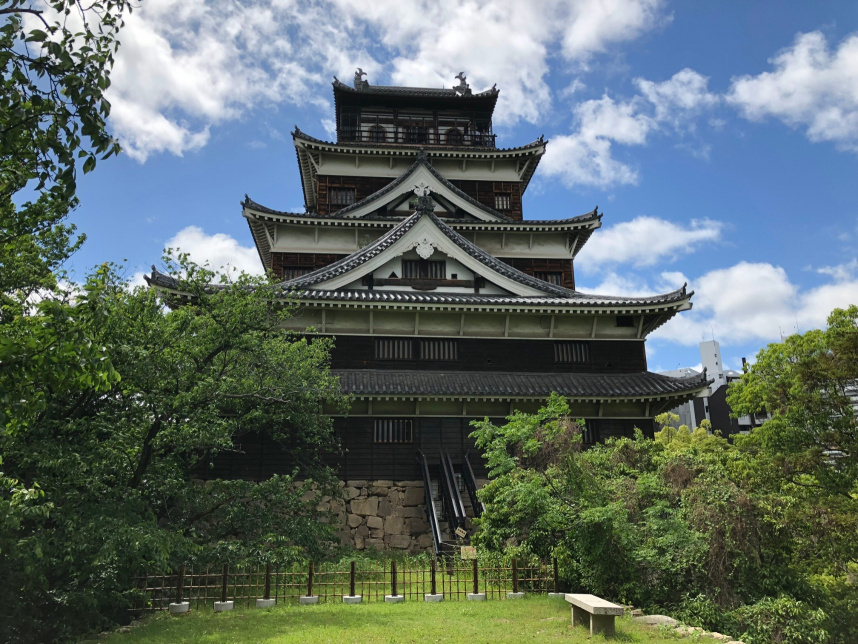 Commentary from Japan Tourism Agency
Commentary from Japan Tourism AgencyHiroshima Castle
Table of Contents

Hiroshima Castle has a history that stretches back to the late sixteenth century. The catalyst for the eventual growth of Hiroshima into a city, the fortress was established by the powerful warlord Mohri Terumoto (1553–1625), who at that time ruled over the majority of the region. Flat land in the Ota River delta was chosen as the site for the castle’s construction, being both relatively easy to build on and to defend.
Hiroshima Castle, with its formidable stone walls, keep, and triple moats (only one of which remains), was built between 1589 and 1599. It was crowned with an imposing tower and accompanied by the establishment of a castle town. Terumoto occupied this stronghold from 1591, as he presided over nine provinces that today comprise Hiroshima, Shimane, and Yamaguchi Prefectures and also parts of Okayama and Tottori Prefectures. The fortress came to be nicknamed “Carp Castle.”
Following the Battle of Sekigahara in 1600, which was key to the unification of Japan under the Tokugawa shogunate until 1867, Terumoto was forced to abandon the castle he had established. Fukushima Masanori (1561–1624) subsequently occupied Hiroshima Castle as the daimyo lord of Aki and Bingo Provinces, until he was banished for repairing damage caused to the castle by a flood in 1619 without first gaining permission from the shogunate. Twelve generations of the Asano family then governed from the castle, until the end of Tokugawa rule and the abolishment of feudalism. Hiroshima Castle then became a facility for the Japanese Imperial Army. In 1931, the original main tower was designated a National Treasure.
Toward the end of World War II, troops were stationed here in anticipation of an Allied invasion. On August 6, 1945 the castle was leveled by the atomic bombing; research suggests its lower pillars were destroyed by the blast, causing the rest of the structure to collapse. The present-day Hiroshima Castle tower, now housing a museum that displays mainly artifacts from Hiroshima’s pre–Meiji era (1868–1912) history, is a concrete reconstruction of the wooden original, and was completed in 1958. Still present within the castle walls, however, are three trees that survived the atomic bombing.